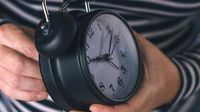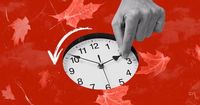As summer fades into autumn, most Australian states and territories will set their clocks back an hour as daylight saving time ends and standard time resumes. Daylight saving officially concludes at 3am on Sunday, April 6, 2025, meaning clocks will revert to 2am Australian Eastern Standard Time (AEST). This biannual ritual affects millions, as about one-third of the world adjusts their clocks seasonally, moving forward in spring and back in autumn. The mantra to remember is simple: spring forward, fall back.
While the prospect of gaining an extra hour of sleep might sound appealing, sleep experts and scientists warn that these biannual time shifts can disrupt our biological clock. Many advocate for eliminating daylight saving time altogether, suggesting we should stick to standard time year-round.
Daylight saving time was first introduced during World War I as a wartime measure to conserve fuel. However, modern research indicates that daylight saving does not significantly reduce overall energy use. In fact, while Australians consume less power for lighting during daylight saving, the increased use of air conditioning during warmer months can offset any savings.
The debate around daylight saving time centers on its potential economic and social benefits, including extended evening daylight for recreation, shopping, and enhanced traffic safety, alongside its health implications. Our biological clock, or circadian rhythm, plays a crucial role in regulating sleep and various bodily functions, including eating and cognitive performance. This clock is closely tied to natural daylight, making exposure at the right time vital for maintaining health.
When we adjust our clocks by one hour, we inadvertently shift our social schedules, including work and school times, along with our exposure to light. As we switch back to standard time, many people will experience sunrise and sunset earlier than their biological clocks anticipate. Conversely, under daylight saving time, morning light is delayed, leading to what experts call "circadian misalignment." This misalignment can adversely affect bodily functions and overall well-being.
The transition from standard time to daylight saving, known as the "spring switch," has been linked to sleep deprivation, contributing to a 5.7% increase in work-related injuries. It is also associated with a heightened risk of cardiovascular and mental health issues, with studies reporting a 4-29% increase in heart attacks and a 6% rise in mental health crises and substance misuse following the time change.
Interestingly, the autumn switch back to standard time, often perceived as beneficial due to the extra hour of sleep, also has its downsides. Research indicates that this transition can lead to increased restlessness at night, compromising sleep quality. A study from Denmark found a rise in depressive episodes lasting up to ten weeks post-transition, likely due to the abrupt shift to earlier sunsets signaling the onset of shorter days.
As the debate continues, both the European Union and the United States are moving toward abolishing the practice of biannual clock changes. The EU's proposal to end these changes has been approved in principle, awaiting final agreement from all member states. Meanwhile, the US Senate has passed the Sunshine Protection Act, which is pending further approval to become law.
From a circadian health perspective, permanent standard time aligns better with our biological clocks than permanent daylight saving time. However, lifestyle adaptations, such as flexible work hours, could allow individuals to enjoy longer evenings without the need for clock changes. After all, daylight saving time merely shifts the timing of light exposure rather than increasing the amount of sunlight available.
In conjunction with the time change, authorities are reminding the public to check their smoke alarms. Fire and Emergency officials stress that this is an opportune moment to ensure smoke detectors are functioning properly. Community education manager Tom Ronaldson emphasized the importance of smoke alarms, stating, "When you see the clocks have gone back, make sure you push the button on each of your smoke alarms. That beep is the sound of knowing you and your household can sleep safe at night." He also noted that the colder weather brings an increased risk of house fires caused by heat sources, making working smoke alarms even more essential.
The practice of daylight saving time has a rich history, credited to Kiwi entomologist George Hudson, who advocated for extending evening daylight hours. Today, around 70 countries observe daylight saving, primarily those closer to the poles, where seasonal variations in daylight hours are more pronounced.
As Australians prepare for the clock change, the Sleep Health Foundation reassures that the adjustment of moving the clock back by one hour in April is generally easier for our bodies than the opposite shift in October. They note that while it can take up to a week to feel normal again after the October switch, the April transition typically requires just one night to adjust.
In conclusion, as we prepare to set our clocks back, it's essential to understand the implications of these time changes on our health and well-being. Whether you love or loathe daylight saving time, this seasonal adjustment is a reminder of the delicate balance between our biological clocks and societal schedules.









